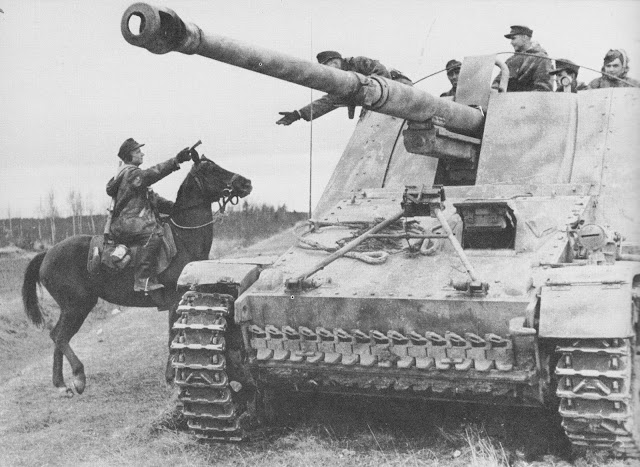Creativity starts with a personal problem
 Saturday, March 8, 2014 at 05:05AM
Saturday, March 8, 2014 at 05:05AM
When I was a librarian long ago, I had an eighth-grade student in my school who loved horses. She insisted we get horse magazines and horse books for the library. Every picture she drew in her notebook was of horses. She spent her time outside of school caring for her horse, on 4-H projects involving her horse, and riding in horsey sorts of competitions.
Unfortunately her history teacher wanted a research paper done on World War II.
As it happened, I had watched a documentary on WWII just before this assignment was given and I noticed that Hitler’s army used a lot of horses to pull equipment from battlefield to battlefield. While we all know about the Panzers and other technologies of this war, horses were still being used extensively.
So just off the top of my head, I suggested to my little horselover that she use “How were horses used in WWII?” as her guiding question. And it actually worked. It helped her narrow the focus of her paper as well as got her interested in WWII as a historical event by giving the assignment relevance to her.
The lesson I learned as an educator is that is possible and useful to blend students’ personal interests with academic standards.
Those who study creativity agree that most innovation is the by-product finding solution to a problem. The Apple II was a creative solution to making a computer that was affordable and easy to use. Binding arbitration is the creative solution to resolving disagreements. The Game of Thrones is a creative means of providing entertainment to millions of people. “How shall I love thee, let me count the ways” may have been a creative way to win the heart of a lover and express and inexpressible emotion.
If you think about it, nearly every technology or technical improvement, every work or art, every new strategy in a sport, or any new theory of success, health, or happiness is the result of unmet needs, challenges, and previously unsolved problems.
Can you give me an example of one that isn’t?
The term “personalized education” is getting a foothold in education. Differentiated instruction treats sub-groups of students in different ways. Individualized education treats individuals in different ways. But personalized education asks that we not only treat each student as an individual, but as a being with unique sets of interests and abilities. And we teach those students by linking their learning to those interests and abilities.
Projects that have the greatest chance of bringing out creative results in students will be those that help students solve personal or personally-interesting problems.
As the A-Team like to say, “It’s just so crazy it just might work.”










Reader Comments (4)
What a great post, Doug! I love how you clearly explained these diff forms of teaching & learning that people have trouble understanding and distinguishing between.
It's a gift to be simple(minded) at times!
Doug
Thanks for this story - it's easy to forget that we will engage students more easily and more completely if we can show them that what they are learning has some connection to their own life. Not always possible, I know, but a great example with the horses.
Hi Teri,
You could turn this question around and ask if we should be teaching anything that doesn't have relevance to a student's life.
Thanks for the comment,
Doug